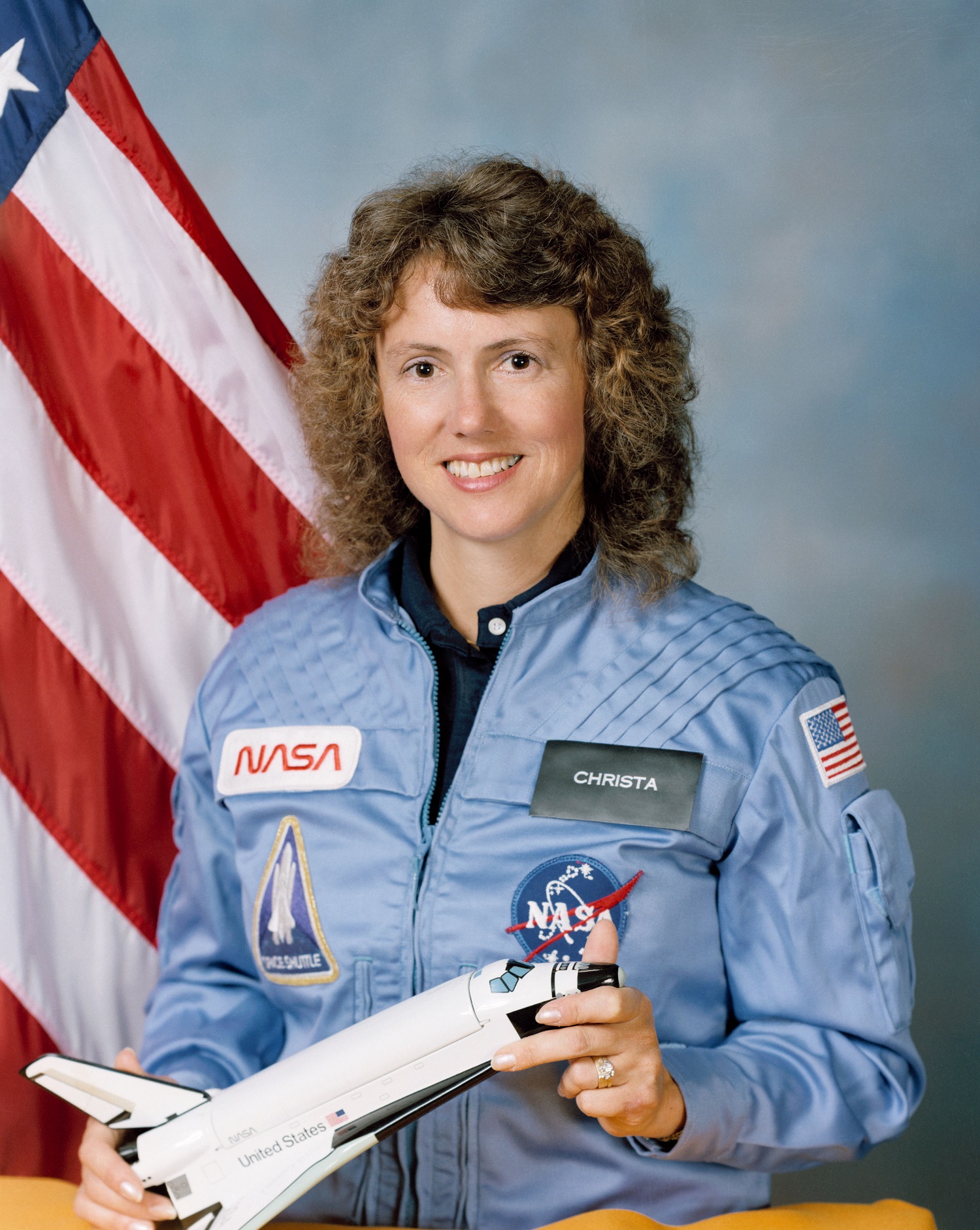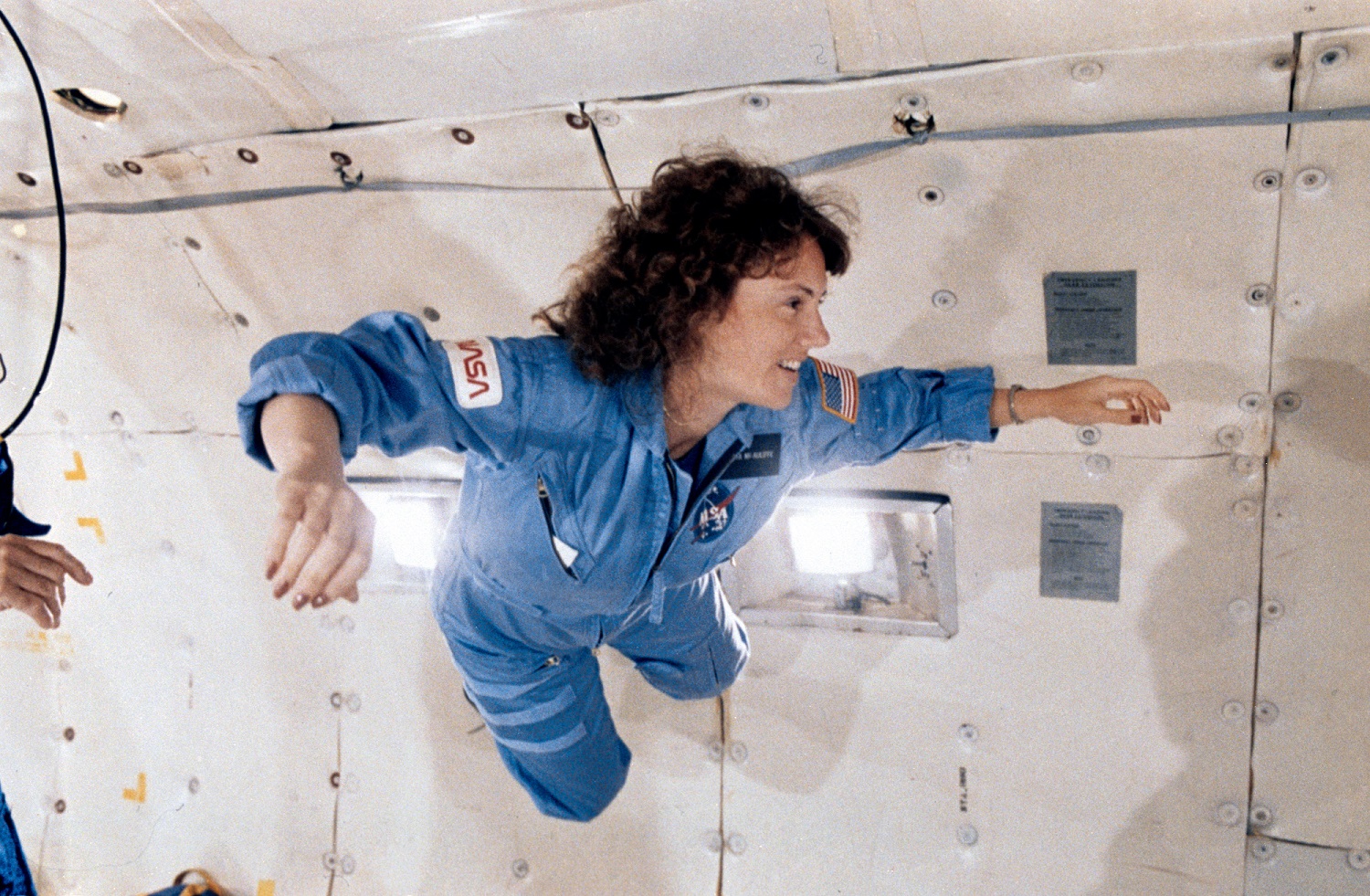Christa McAuliffe
NASA, Official portrait Sharon Christa McAuliffe, STS 51-L Teacher in Space, 1985. NASA Image and Video Library.
Teacher in Space Christa McAuliffe on the KC-135 for zero-G training
NASA, Teacher in Space Christa McAuliffe on the KC-135 for zero-G training, 1985. NASA Image and Video Library.
Teacher in Space brochure
Peggy Noonan, Documents related to Ronald Reagan’s Challenger speech, 1985. National Archives.
Background
President Ronald Reagan announced the Teacher in Space Project on August 27, 1984. The National Aeronautics and Space Administration (NASA) program would allow a teacher to be the first private citizen to go into space. President Reagan’s goals for the Teacher in Space Project were to honor teachers and inspire students’ interest in science, math, and space.
Over 11,000 teachers applied to the program. On July 19, 1985, Vice President George H. W. Bush announced that Christa McAuliffe, a social studies teacher from New Hampshire, would be the first Teacher in Space. For the next year, she trained with NASA in preparation for her Space Shuttle mission in 1986. Christa McAuliffe planned to conduct science experiments and broadcast two lessons from space.
Christa McAuliffe and six other crew members took off on the space shuttle Challenger on January 28, 1986. Millions of schoolchildren watched the first teacher headed for space when disaster struck. After 73 seconds in the air, the Challenger exploded. Everyone on board was killed. No other teachers were selected as part of the Teacher in Space program, and NASA officially ended the initiative in 1990.
About the Document
Christa McAuliffe’s official astronaut portrait was taken during her months-long preparation for her space mission. This training included acclimating to microgravity aboard a NASA zero-gravity aircraft.
The teacher’s guide was published by NASA and distributed to teachers across the nation. It includes background information about the Teacher in Space program, detailed descriptions of the two live lessons Christa McAuliffe planned to lead, and additional teaching resources.
Vocabulary
- aeronautics: The science of designing and building airplanes.
- microgravity: The condition of being nearly weightless.
Discussion Questions
- What were the goals of the Teacher in Space program?
- How did Christa McAuliffe prepare to go into space? Why was this training so intensive?
- Most astronauts were (and still are) men. What was the significance of Christa McAuliffe being selected as a female teacher? What challenges might she have faced as a woman in a male-dominated environment?
- What happened to the space shuttle Challenger? How do you think the disaster impacted the children watching the launch in schools?
Suggested Activities
- Consider the broader impact and aftermath of the Challenger disaster by pairing this resource with materials about President Ronald Reagan’s response in our curriculum guide Opening the Oval with David M. Rubinstein: Understanding American Power.
- Pair this resource with the life story of Ellen Ochoa to explore the work of women in space exploration.
- The Challenger Center has developed lessons and videos based on Christa McAuliffe’s lesson plans. Video content and lesson plans on chromatography, microgravity, and Newton’s laws can be found on the Challenger Center website.
- For a larger lesson about the experiences of major historical events on women during this period, combine this resource with photographs of female hostages in Iran, a speech about the effects of the nuclear disaster at Three Mile Island, Maxine Waters on the Rodney King verdict, and the life stories of Maria Connie Villescas and Rachel Scott and Cassie Bernal.
Themes
AMERICAN CULTURE; SCIENCE, TECHNOLOGY, AND MEDICINE; WORK, LABOR, AND ECONOMY








